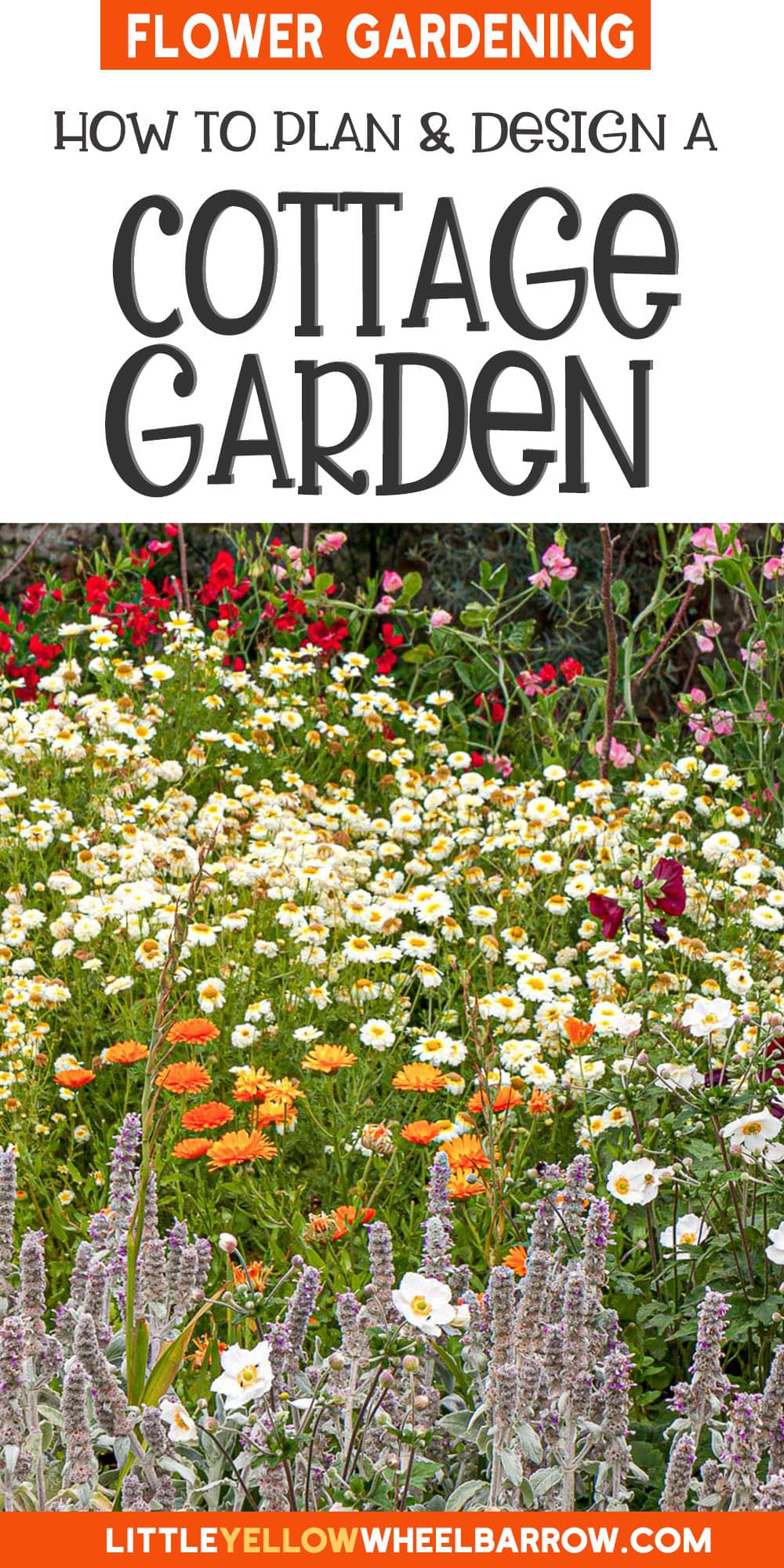How To Design A Charming and Enchanting Cottage Garden
Few things are as romantic and charming as a cottage garden. Cottage gardens delight the senses with colorful and fragrant flowers that add garden whimsy and romance. Planning and growing a cottage garden may seem daunting, but it can be a fun and rewarding experience!
This article outlines the planning considerations for creating a traditional English cottage garden. We include location planning, design principles, cottage garden flowers, and how to care for and maintain your garden for years.
With these tips and tricks, you’ll be on your way to creating a beautiful and enchanting cottage garden.

Planning Your Traditional Cottage Garden
A cottage garden is a beautiful and romantic garden that can add charm and personality to any landscape. Planning your cottage garden can be a fun and rewarding experience. Here are some tips and tricks to help you get started.
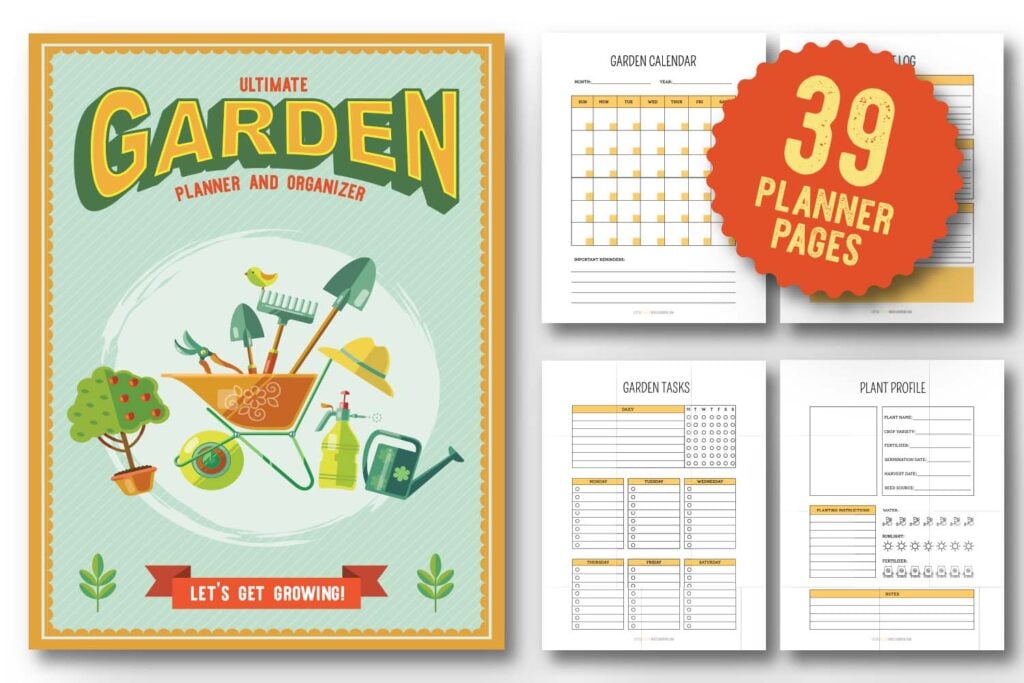
Choosing the Right Location & Shape for Your Garden
Cottage gardens are relaxed and informal flower gardens that you can build in various settings. The first step for planning is to decide where you want to grow your cottage garden. You will need to understand the space you are working with to plan the right number and types of plants.
When choosing the location for your garden, consider things such as sunlight, soil quality, and water availability. You’ll want to select a site with full sun and good drainage, as many cottage garden plants prefer these growing conditions.
When deciding on the size and shape of your garden, consider factors such as the amount of space you have available, the types of plants you want to grow, and the style of your home and landscape. A cottage garden will look right at home with a victorian style home but may be too odd to place beside a modern one.

Selecting Plants that Thrive in Your Climate Zone
One of the most important factors to consider when planning your cottage garden is the climate zone in which you live.
When selecting plants for your garden, also consider soil type, water availability, and sun exposure. You’ll want to choose plants that are well-suited to your climate zone, and that will thrive in your garden.

Choosing a Color Scheme for Your Garden
Cottage gardens are known for their colorful and vibrant displays of flowers and foliage. When planning your garden, consider choosing a color scheme that complements the style of your home and landscape.
You can choose a monochromatic color scheme, such as all shades of pink, or a complementary color scheme, such as blue and yellow. Mix and match colors to create a vibrant and eclectic display.
Design Principles for An Informal Flower Garden
One of the fundamental design principles for a cottage garden is to create a mix of different plants and colors.
The garden should have a relaxed and informal feel, with various flowers, shrubs, and trees arranged seemingly haphazardly. This mix of plants and colors can create a beautiful, dynamic landscape that constantly changes throughout the growing season.
Another important design principle for a cottage garden is to incorporate a sense of depth and height. You can achieve height and depth in your garden design by planting taller plants at the back of garden beds, along fences, and shorter plants at the front or along walkways.

Creating Cottage Garden Beds and Borders
Creating garden beds and borders is part of designing a cottage garden. The garden beds should be arranged to create a natural flow and movement through the garden. The garden beds can be designed in various shapes, including curved or straight lines, to add interest and create visual appeal.
Adding Garden Paths and Walkways
Also consider your garden paths and walkways in your design. Paths can provide easy access to different garden areas, making it easier for maintenance. Gravel, brick, and mulched paths are all traditional walkway path materials.
When designing garden paths and walkways, it is crucial to consider the scale and proportion of the garden. Paths and walkways should be built to complement the garden’s size and style and provide a natural flow and movement through the landscape. Too-narrow paths will look out of place as much as too-wide paths.

Adding Decorative Touches With Arbors and Trellises
Adding decorative pieces to a cottage garden can add a touch of playful whimsy. Arbors, trellises, and garden ornaments can also create focal points and contrast to the garden.
Arbors and trellises can also create a sense of height and depth in garden beds.
Hardscape additions such as trellises with climbing plants like roses or clematis create beautiful romantic displays. While garden ornaments, such as statues or birdbaths, can create visual appeal and add a touch of personality to the landscape.
Roses
Roses are the quintessential traditional cottage garden plants due to their timeless beauty and romantic appeal. Their fragrant blooms and delicate petals in various colors, from pale pink to rich red, add charm and elegance to any garden.
Roses can climb arbors, trellises, or fences, making them an excellent choice for adding vertical interest to a cottage garden.
Many roses are well-suited to cottage gardens, including old-fashioned varieties grown for centuries. With their beauty, versatility, and long history of use in cottage gardens, roses are a perfect choice for adding romance and elegance to any outdoor space.

Types of Roses For Cottage Gardens
Cottage gardens can incorporate a variety of rose types, including climbing roses, shrub roses, and old-fashioned varieties. Climbing roses are ideal for covering walls, fences, and trellises, while shrub roses work well for borders or stand-alone plants.
Old-fashioned varieties such as English and heirloom roses offer a classic look and add a touch of nostalgia to the garden.
- Learn More: See our complete guide on growing and caring for drift roses, or our list of the top companion plants for rose gardens!
Peonies
Peonies are a popular choice for cottage-style gardens due to their big, fluffy blooms and vibrant colors that add a romantic charm to any garden.
These perennials come in shades from pure white to rich pink, red, and deep burgundy. They bloom in late spring to early summer and last several weeks.
Peonies are easy to grow, require minimal maintenance, and are often passed down from generation to generation, adding a sense of history and nostalgia to cottage gardens.
With their timeless beauty and low-maintenance requirements, peonies are an excellent choice for gardeners looking to create a whimsical and romantic cottage garden.
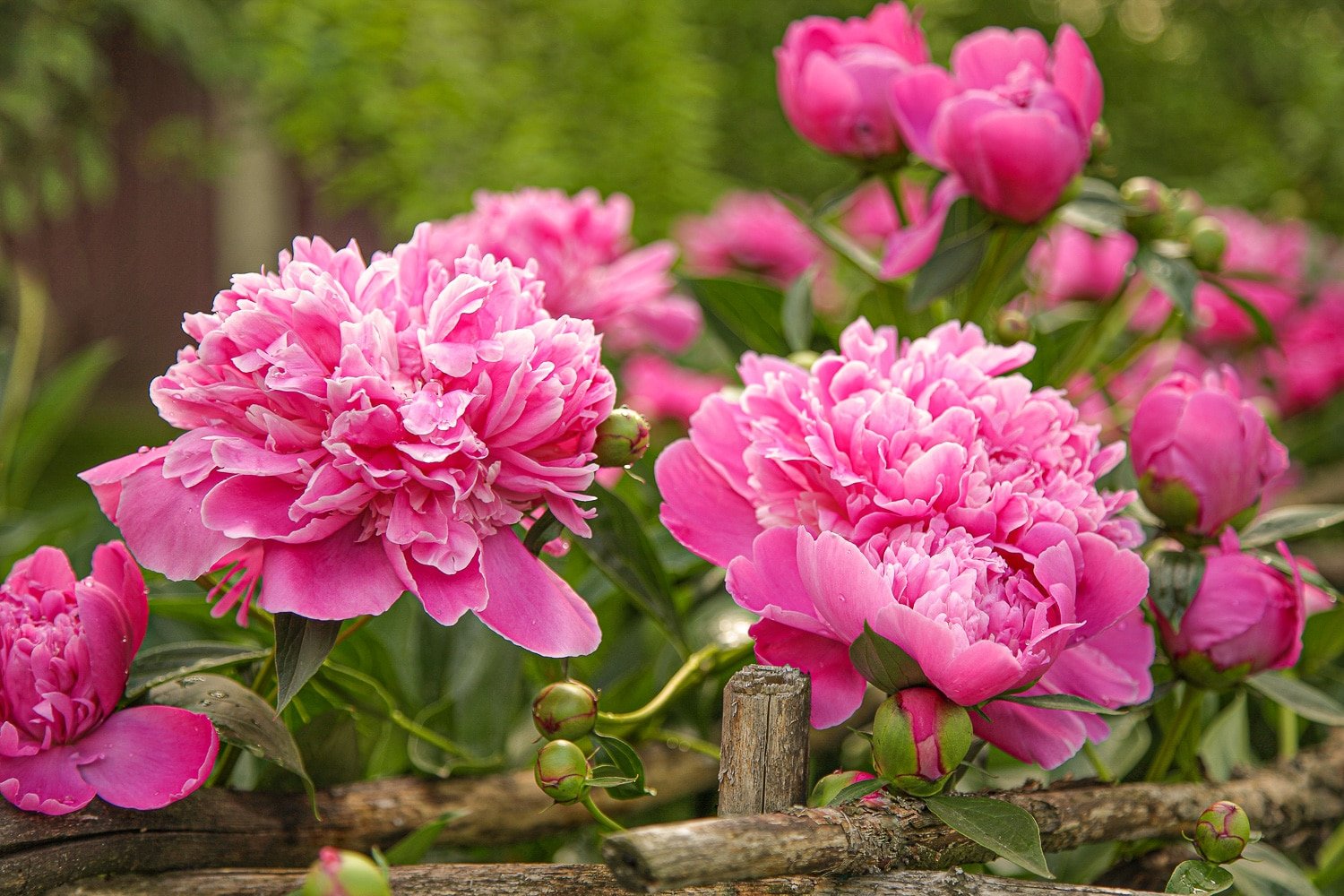
Types of Peonies
There are two main types of peonies: herbaceous and tree peonies. Herbaceous peonies are the most common and have soft stems that die back in the fall. Tree peonies have woody stems that remain all year long.
- Learn More: Peonies do best when planted in the fall, but you can get away with planting them in the spring, too. Check out this full guide to successfully plant peonies in spring.
Lavender
With its soft purple flowers and wondrously scented foliage, lavender adds a sense of calm and romance to any garden space.
Lavender is also well-suited to cottage gardens due to its low maintenance requirements and ability to thrive in many different growing conditions. You can place lavender on the edge of garden beds, grow it as a hedge or border, or as a single plant in a container.
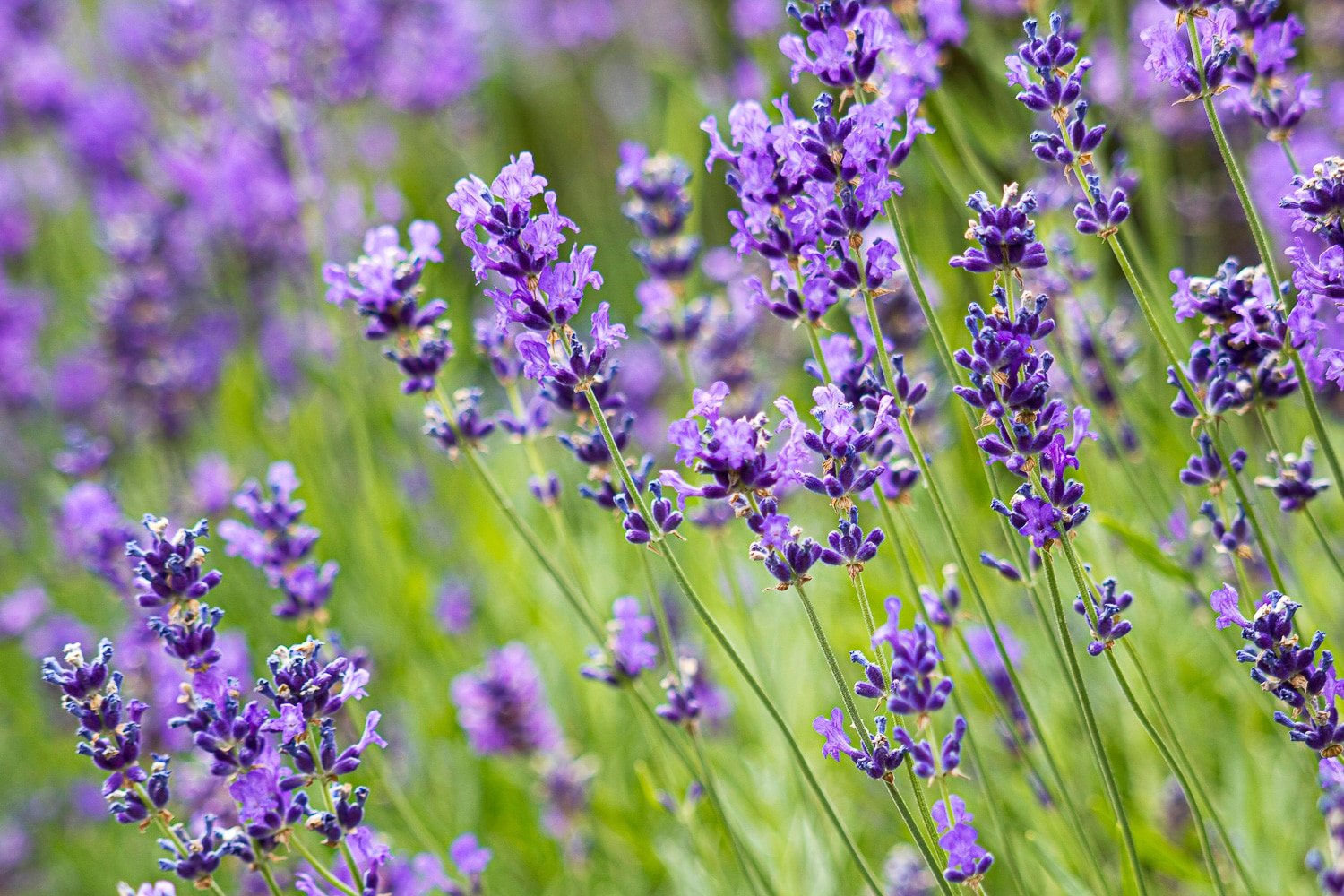
Types of Lavender
There are many different types of lavender, but the most common varieties used in cottage gardens are English lavender (Lavandula angustifolia) and French lavender (Lavandula stoechas).
English lavender has narrow leaves and tall, slender purple flowers, while French lavender has broader leaves and shorter, more compact flower spikes. Both varieties come in various colors, from light purple to deep blue.
Learn More: See our guides on growing, caring for, and utilizing lavender plants:
- How To Grow Lavender In Pots Successfully!
- How To Dry Lavender (Preserving Methods And Tips)
- What To Do With Dried Lavender This Harvest Season
- The Best Lavender Companion Plants For Your Garden
- Drought Tolerant Plants For Hot, Dry Summers
Foxgloves
Foxgloves are popular for cottage-style gardens due to their tall, spiky blooms and delicate bell-shaped flowers. Their vibrant colors, from pure white to soft pink to deep purple and burgundy, add a touch of whimsy and charm to any garden.
Foxgloves add height and texture to cottage gardens and can be grown along fences or used to create a backdrop for other plants. Additionally, foxgloves are easy to grow, require minimal care, and attract pollinators like bees and butterflies, making them an excellent choice for eco-friendly gardeners.
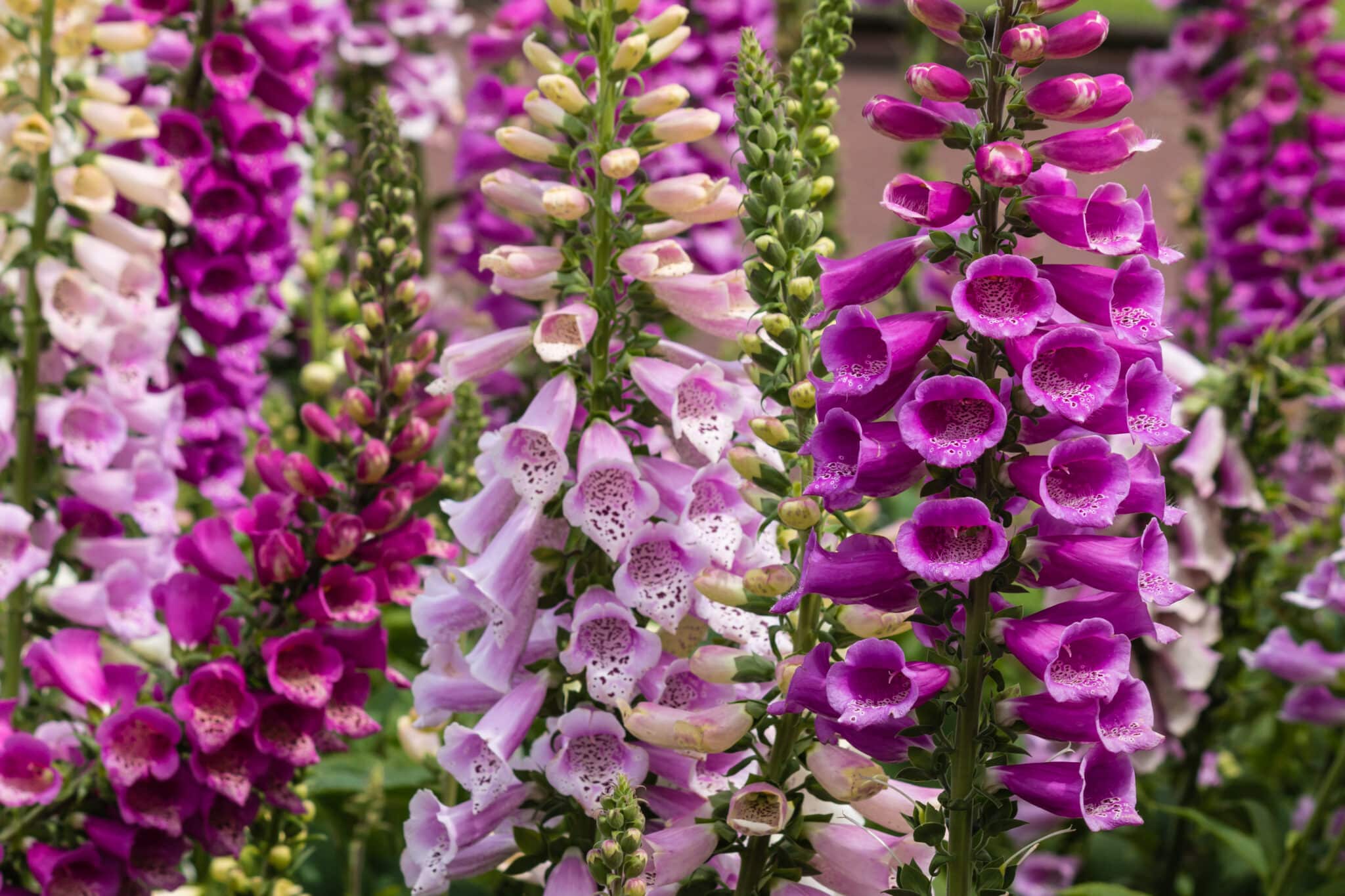
Types of Foxgloves
There are several species of foxgloves, but the most common variety used in cottage gardens is the common foxglove (Digitalis purpurea). This biennial plant produces tall spires of pink, purple, white, or yellow flowers in the summer, and its leaves are fuzzy and green.
Other foxgloves, such as the yellow foxglove (Digitalis lutea) and the rusty foxglove (Digitalis ferruginea), can also be used in cottage gardens.
- Learn More: See our full guide on planting, growing, and caring for foxglove flowers.
Delphiniums
Delphiniums are a popular choice for cottage garden flowers due to their tall, stately spikes of colorful flowers that bloom in mid-summer.
They come in shades of blue, pink, purple, and white; some varieties have bi-colored petals. The flowers of Delphiniums can last up to six weeks, making them a long-lasting addition to any garden.

Types of Delphiniums
Two types of Delphiniums are suitable for a cottage-style garden: the tall, elegant Pacific Hybrids and the shorter, bushier Dwarf Pacific Hybrids. Both types can grow up to 4 feet tall and are perfect for creating a stunning backdrop in the garden.
Hollyhocks
When creating a charming and cozy cottage garden, hollyhocks are a must-have. These majestic flowers have been a cottage garden favorite among gardeners for centuries and continue to grace gardens with their beauty and elegance.
Hollyhocks are tall, biennial plants that can grow up to 6 feet tall and are prized for their large, showy flowers that bloom in various colors, including pink, red, white, yellow, and purple. Hollyhocks typically bloom in midsummer, from June to August, and can continue to flower for several weeks. The blooms are large and trumpet-shaped, with a delightful musky scent that adds to their appeal.

Type of Hollyhocks Suitable for a Cottage Garden
There are many types of hollyhocks, but some are better suited for cottage gardens than others. Single-flowered hollyhocks are a classic choice for cottage gardens, with their simple, elegant flowers and sturdy stems.
Double-flowered hollyhocks can add a touch of overstated drama and romance to a cottage garden with their dense, frilly old fashioned blooms. Other types of hollyhocks, such as the black hollyhock or the fuzzy-leaved Alcea rugosa, can provide an interesting contrast to other plants in the garden.
- Learn More: See our guide on growing brilliantly beautiful hollyhocks.
Sweet Peas
Sweet peas are charming and fragrant flowers that add an old-fashioned element of elegance to a cottage garden. These delicate flowers have been a favorite among gardeners for centuries and are a treasured addition to gardens worldwide.
Sweet peas are annual climbing plants that can grow up to 6 feet tall. They have a delicate, airy appearance with a remarkable scent. Sweet peas bloom in mid-spring to early summer, typically from May to July, and can continue to flower until the first frost of autumn. The blooms are small and delicate, with various colors, including pink, purple, white, and blue.

Type of Sweet Peas Suitable for a Cottage Garden
There are many sweet peas, but some are better suited for cottage-style gardens than others. Old-fashioned heirloom varieties are a classic choice for cottage gardens, with their soft, pastel colors and delicate blooms.
With their larger, ruffled flowers, Spencer varieties can also add a touch of drama and texture to a cottage garden. Other types, such as the dwarf or bush sweet pea, can create a low-growing ground cover or edge garden beds.
Poppies
Poppies are stunning and colorful flowers that add joy and vibrancy to any cottage garden. These resilient flowers have been used for centuries to brighten gardens and landscapes and are popular among gardeners worldwide.
Poppies are annual or perennial plants that can grow up to 4 feet tall and are prized for their large, showy flowers that bloom in various colors, including red, pink, orange, white, and purple.
Poppies bloom in late spring to early summer, typically from May to June, and can continue to flower until the first frost of autumn. The blooms are large and ruffled, with a delicate, papery texture.

Type of Poppies Suitable for a Cottage Garden
There are many types of poppies to choose from, but some are better suited for cottage gardens than others.
The Shirley poppy, with its delicate, ruffled flowers in shades of pink, red, and white, is a classic choice for cottage-style gardens.
The California poppy, with its vibrant orange or yellow flowers, can add a touch of cheerfulness and brightness to a garden.
Other poppies, such as the Iceland poppy or the Oriental poppy, can provide a range of colors and textures to the garden.
Learn More: Check out our complete guide to growing Iceland poppies!
Daisies
Daisies are delightfully happy flowers that add a touch of whimsy and cheerfulness to cottage gardens worldwide.
These hardy perennial plants can grow up to 36 inches tall. The flowers are prized for their simple blooms that come in various colors, including white, pink, and red. The blooms are small and delicate, with a yellow center and a ring of petals.
Daisies bloom in late spring and into early summer, usually from April to June, and can continue to flower until the first frost of autumn.
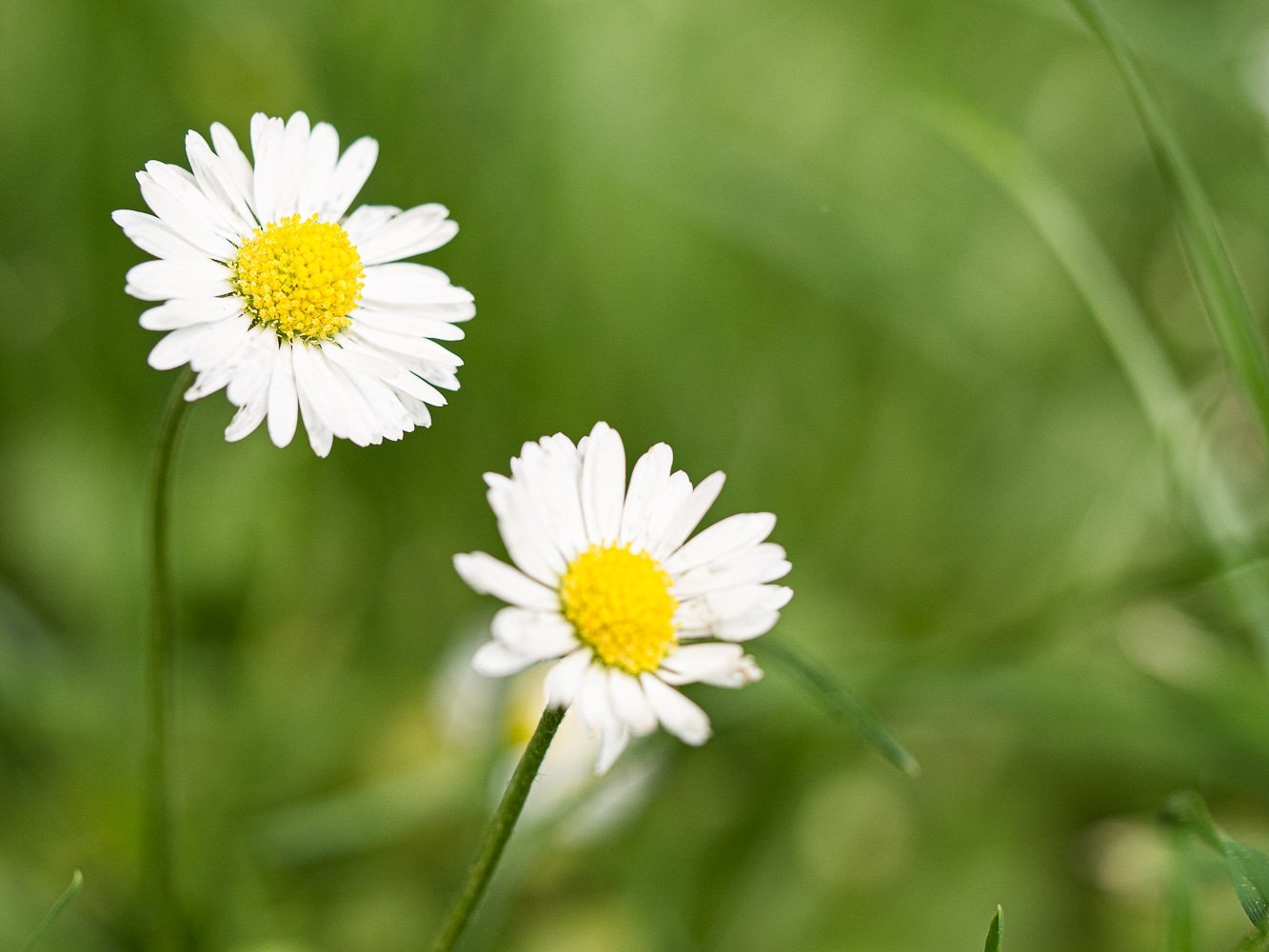
Type of Daisies Suitable for a Cottage Garden
Some daisies are better suited for cottage gardens than others.
The English daisy, for example, with its charming flowers in pink and white, is a classic choice for cottage-style gardens.
Shasta daisies are also good choices for a cottage garden. The flowers will spread in a cottage garden, filling it with cheerful, happy, yellow-centered white blooms.
Bee Balm
Bee balm (Monarda) is a wonderful flowering plant, growing up to 4 feet tall. The flowers are loved for their brilliant, tubular-like flowers that bloom in pink, red, purple, and white colors.
Monarda will bloom in midsummer, usually from June to August, and can continue to flower until the first frost. The blossoms are billowy with a delightful scent.

Type of Bee Balm Suitable for a Cottage Garden
The classic red bee balm makes an attractive choice for the cottage-style garden. Its bright red flowers stand out against dark foliage and can draw the eye from point to point in your garden plan.
The pink or purple bee balm can also add a touch of softness and charm to a garden. Other types of bee balm, such as lemon, or bergamot bee balm, can provide a range of fragrances in the garden. The flowers also appeal to pollinators like bees, butterflies, and hummingbirds.
Garden Phlox
Garden phlox is a workhorse in the cottage garden. Their fragrant ruffly flowers in bright colors make phlox a perfect addition to any cottage garden. These tall flowers with strong stems work exceptionally well at the back of cottage flower beds.
These perennial plants can grow up to 3-4 feet tall and have tubular flowers that bloom in various colors, including pink, purple, white, and red.
Garden phlox blooms in mid to late summer, usually from July to September, and can continue to flower until the first frost arrives in fall.

Type of Garden Phlox Suitable for a Cottage Garden
There are many types of garden phlox to choose from, but some are better suited for cottage-style gardens than others.
With its fragrant flowers and delicate appearance, the classic pink or white garden phlox is famous for cottage gardens. However, the purple or red garden phlox can also add a touch of drama and color to a garden. Other types of garden phlox, such as the dwarf or creeping phlox, can be used to create a low-growing ground cover or to edge garden beds.
- Learn More: For more beautiful perennial flowers, check out this list of our top show-stopping perennials for any garden.
Cottage Style Gardens Maintenance and Care
Cottage-style gardens are known for their charm and beauty, but they require maintenance and care to keep them looking their best. Here are some tips for watering, fertilizing, pest and disease management, pruning, and deadheading to keep your cottage garden looking beautiful year-round.
Tips for Watering and Fertilizing Your Cottage Garden
Cottage gardens require regular watering and fertilizing to thrive. Water deeply and infrequently to encourage deep-root growth. It is best to water in the early morning or late afternoon to avoid water loss from evaporation during the hottest part of the day.
Fertilizer should be applied every four to six weeks during the growing season, using a balanced fertilizer appropriate for the plants in your garden.

How to Prevent and Manage Common Garden Pests and Diseases
Common garden pests and diseases can wreak havoc on a cottage garden if not appropriately managed.
Prevention and good garden hygiene are the best defense against pests and diseases. For example, removing dead plant material and debris from the garden can help prevent insect infestations.
If pests or diseases occur, various organic and chemical treatments are available to help manage them. Identifying the pest or disease and choosing the appropriate treatment to avoid damaging the plants in your garden is crucial.
- Learn More: Weeds are the enemy, and to defeat them we must understand them. Check out this guide on how weeds grow to gain the upper hand.

Pruning and Deadheading Techniques
Deadheading and pruning are essential techniques for maintaining the health and beauty of a cottage garden. Pruning should be done in the late winter or early spring. Remove dead or diseased wood to encourage healthy growth and shape the plants in your garden.
Deadheading, or removing spent flowers, can encourage the plant to produce new blooms and prevent the spread of disease. Deadhead regularly throughout the growing season.
Looking For More Gardening Inspiration?
- The Best Flowers For Pots and Containers
- Which Flowers are Edible? A List of Edible Flowers and Their Uses!
- Yellow Perennial Flowers – 12 Recommendations to Plant in Your Garden
- 12 Fastest Growing Flowers to Grow in Your Garden (2022)
- How to Dry Flowers – We Tested 5 Different Methods to Find the Best!
- How to Grow Lupins – A Guide for Growing Robust Displays
- Why and How to Grow Chamomile for Tea



